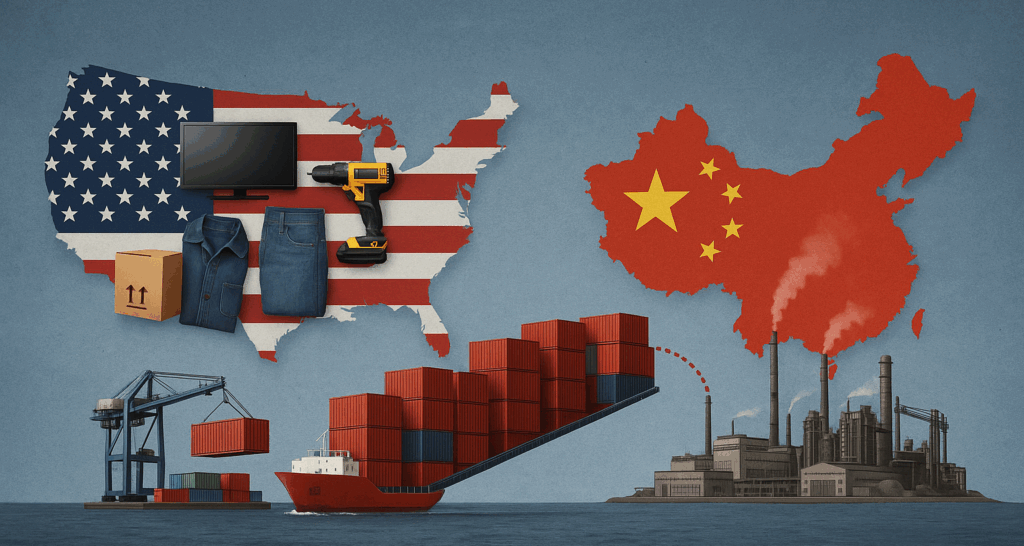
Fireworks have long been a staple of the Fourth of July celebrations but this year, Americans may face shortages and higher prices. The reason? Nearly all fireworks sold in the U.S. are imported from China, and the steep 145% tariff on Chinese goods is forcing U.S. distributors to either raise prices significantly or cut back on shipments.
According to ImportGenius, American companies import close to $400 million worth of consumer fireworks from China each year, making up 97% of the total fireworks imports. This heavy reliance on China is not limited to pyrotechnics—over 200 other imported products also depend on China for more than 90% of their supply.
The data shows that the U.S. sources 100% of its imports for 19 different products solely from China, and 99% for another 18. In total, 221 products rely on China for at least 90% of their U.S. supply. As tariffs squeeze profits, many American businesses have reduced their orders—imports from China have dropped 45% as companies scramble to find alternative sources.
Finding those alternatives, however, is easier said than done. “What stands out from our research is the breadth of American dependency on Chinese imports,” says IG President Christopher Schafer. “It goes far beyond just home appliances. Importers looking for new suppliers face an uphill battle—but our data can help them.”
Holiday Traditions and Everyday Essentials
The impact of these tariffs stretches beyond fireworks. Holiday staples like artificial Christmas trees, ornaments, and nativity sets are also primarily made in China. Some Chinese manufacturers report a sharp drop in orders from U.S. buyers ahead of the holiday season.
Other everyday items are affected as well. For example, while Crayola still produces crayons domestically, 93% of coloring books come from China. Backyard playsets and many other children’s items also rely heavily on Chinese manufacturing.
Strategic and Industrial Concerns
The reliance goes deeper, touching even national security and industrial manufacturing. Key materials such as:
- Manganese, used in glassmaking and high-strength steel for infrastructure and defense,
- Synthetic sapphire (artificial corundum), critical for ceramic armor,
- Tungsten, essential in military applications like armor-piercing rounds and aerospace components,
are heavily sourced from China, leaving the U.S. vulnerable to supply chain shocks in strategic sectors.
A Global Search for Alternatives
While breaking this dependency is challenging, it’s not impossible. Suppliers in other countries do exist. “Three weeks ago, most American businesses thought their supply chains were stable,” Schafer says. “That’s no longer the case.”
To navigate this volatile trade landscape, companies must forge global partnerships and diversify their sourcing strategies. While most non-Chinese imports currently face only a 10% tariff, that may change in July when reciprocal tariffs increase. With many countries rushing to negotiate trade deals, the future remains uncertain.
“In today’s environment, businesses have to be ready to adapt quickly,” says Schafer. “It’s hard to skate to where the puck is going when there are so many pucks in play—but that’s the game we’re in now.”
Source: ImportGenius